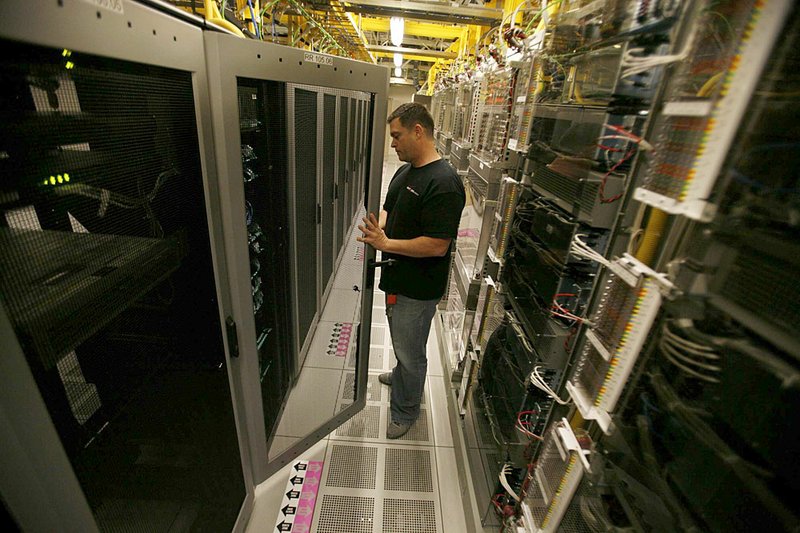LITTLE ROCK — The next generation of smart phones will be more like mobile entertainment centers, allowing users to watch live high-definition TV broadcasts, download entire movies in seconds, and make uninterrupted video phone calls from street corners and hilltops alike.
All four major cellular providers have been touting the speed and possibilities of 4G networks, meaning fourth generation, but the number of consumers these embryonic networks now reach is limited. Only a few early handsets are on the market and it could be a year or more before the technology is widely available.
Sprint Nextel Corp. has an early lead in the 4G race, having turned on its new networks in a few dozen smaller cities this year.
None of those cities is in Arkansas, according to the company website.
Sprint’s network, based on a technology called WiMax, will offer users average download speeds of about 3 to 6 megabits per second - roughly four times what most 3G users get now. At those speeds, users could download a song in about 10 seconds.
But Sprint’s 4G network will cover only a fraction of the users that it serves with its 3G system. The company says if someone is looking to upgrade, he should first consult online maps to see whether his home or office is covered. If it isn’t, he might end up with a flashy 4G phone that’s getting the same old 3G speeds.
Building the networks has been slow and costly for all of the major providers, which have spent billions retrofitting cell towers across the country, replacing older copper wiring with fiber-optic cable capable of carrying thousands of times more data.
“I’ve never seen a network undertaking that’s as intensive as this, including the building of the original cellular network,” said Andy Shibley, AT&T’s vice president and general manager for the Los Angeles area, noting that the company has spent close to $40 billion building its network over the past two years. AT&T has upgraded tens of thousands of cell sites across the U.S.
“When you start dealing with that many zeros, that’s a giant undertaking,” Shibley said.
At a new Verizon Wireless switching center in Los Angeles last month, Jim Harper, a senior technician, walked down rows lined with dozens of black metal cabinets containing hundreds of circuit boards that process millions of calls and data requests every day.
Harper stopped at a lone white cabinet, about the size of a gym locker. It was a 4G server that could handle as much call traffic as 50 of the black 3G cabinets. Verizon’s version of 4G, the company says, will allow speeds of 5 to 12 megabits per second - more than twice as fast as Sprint’s on the high end.
“The pace that the technology moves is just exploding,” Harper said.
Yet as powerful as the forthcoming technology may be, the white cabinet was still the only one in the room - a sign that Verizon is still in the early days of building its network.
Verizon Wireless hasn’t turned on 4G yet. It will begin to flip the switch in about 30 U.S. cities this year, initially offering 4G service only to wireless accessories for laptops. Its 4G smart phones won’t come out until sometime in the middle of 2011, and as far as size, its 4G network won’t catch up to its existing 3G footprint until 2013.
The technical definition of 4G is set by a United Nations standards body. It has to do with the specific way data are moved around and was created to achieve mobile broadband close to 100 times faster than what is available today.
The carriers have jumped out in front of that definition, however, adopting the 4G label even when their networks do not fit the technical specifications.
T-Mobile, which as recently as March was calling its grid the “nation’s fastest 3G wireless network,” recently began referring to itself as “America’s largest 4G network” - though its technology has not changed.
T-Mobile uses a technology called HSPA+, an extension of 3G networking that delivers much faster speeds. The company contends that the technical definition doesn’t much matter to consumers, as long as they’re getting faster service.
“Consumers don’t care about how many G’s are attached to the underlying technology,” said David Gallacher, T-Mobile’s regional vice president of engineering, noting that T-Mobile’s HSPA+ network is faster than Sprint’s4G offering. “They care about the speed and quality of the experience.”
AT&T, the iPhone’s exclusive carrier thus far, has endured frequent criticism about the performance of its wireless network, which has sometimes creaked under increasing demands of data hungry smart phones. The company has taken a more cautious approach to the 4G debates.
AT&T, like T-Mobile, has highlighted its faster new HSPA+ network - but unlike T-Mobile, it has not called it 4G. It has said its HSPA+ networks, which have just begun rolling out, will be two or three times faster than other companies’ 3G offerings.
As for 4G, AT&T said it will begin rolling it out toward the middle of next year.
Business, Pages 21 on 11/22/2010
